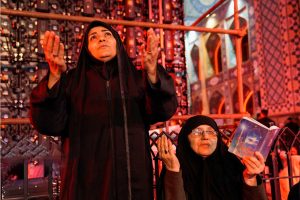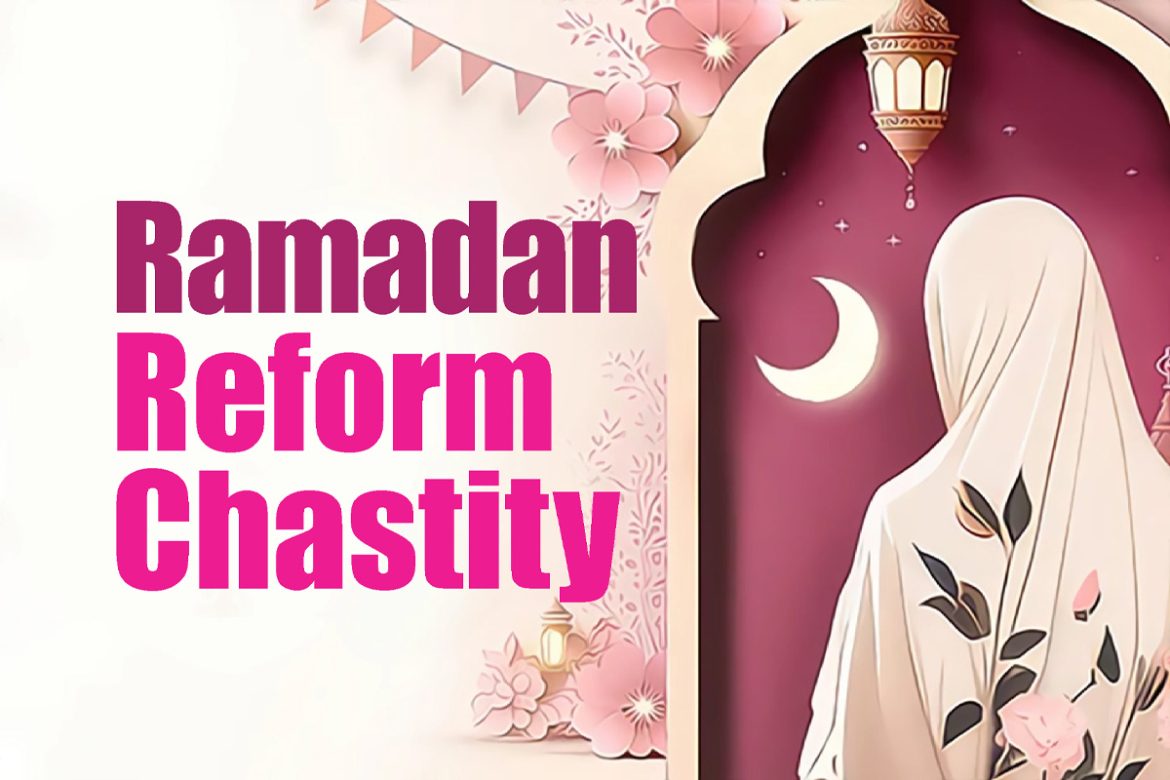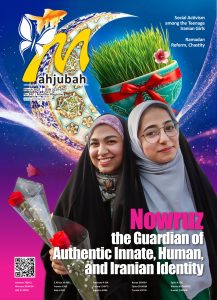The holy month of Ramadan is one of the most auspicious times of the year for self-improvement and individual as well as social reform. During this month, Muslims strive to draw closer to God by engaging in acts of worship such as fasting, prayer, and supplication. During the days and nights of Ramadan, believers make a greater effort than usual to embody the religious principles of Islam in their conduct. Hijab and chastity are also among the divine commandments for Muslims, particularly for women.
From an Islamic perspective, it is believed that the hijab (veil) carries positive and unique functions, both in the individual dimension for women and in the social dimension for the family and society. In this note, we will highlight some of these functions in both the individual and social realms.
A) Personal Functions of Hijab (Veil)
1 – Enhancing the Woman’s Personality
In the system of creation, every being is endowed with a unique set of characteristics that distinguish it from others. The veil helps emphasize and preserve the distinct identity and dignity of a woman, allowing her personality to shine in a manner that aligns with her innate nature and values.
As a being, a woman possesses unique characteristics that distinguish her from a man. One such characteristic is her sexual attractiveness. The female body has historically been an object of attraction for men, who have often sought to possess it. However, it is important to recognize that a woman is not merely defined by her physical beauty or sexual appeal; she also possesses a distinct personality and human identity that transcends her physical form.
When a woman appears in public without observing proper covering and instead emphasizes her sexual attraction, she indirectly communicates that her worth lies primarily in her physical appearance. In such cases, will her true personality and human identity be acknowledged? By concealing her external charms and beauty, the hijab shifts the focus toward her inner qualities and human essence. It redirects attention from the superficial to the profound, allowing her personality and transcendental attributes to take center stage. When encountering a woman in hijab, the conversation no longer revolves around sexual attractiveness or physical features like beautiful eyes and eyebrows. Instead, her dignity, intellect, and moral character become the focal points of recognition.
2 – Ensuring the woman’s Security
It is evident that women who present themselves in society without adhering to modesty are more vulnerable to inappropriate behavior from lustful men compared to those who observe the hijab. Statistics on rape and harassment in Western societies, where the hijab is less common, support this fact, showing a higher incidence of such incidents among women who do not observe the hijab compared to those who do. When women appear in society with modesty and chastity, lustful men are less likely to consider harassing or abusing them, as the veil acts as a barrier that discourages such behavior.
Conversely, a woman who appears in public without a veil and does not restrict the gaze of non-mahram men inadvertently allows lustful individuals to feel emboldened to harass or harm her. Imam Reza (AS) emphasized this point in a narration, stating that the purpose of the veil is to prevent men from being incited and to avoid the security issues that arise from such situations. The hijab, therefore, serves as a protective measure, safeguarding women’s dignity and reducing the risk of harassment.
3 – Enhancing the Woman’s Attractiveness and Value
We know that the harder something is to obtain, the more desirable and valuable it becomes, while what is easily accessible tends to be perceived as less valuable and significant. For instance, gold is more valuable than bricks or many other materials because it is rare and difficult to access. If gold were as abundant and easily found as stones or bricks, it would undoubtedly lose its value. Similarly, when a woman is easily and freely accessible, her worth diminishes in the eyes of others. Conversely, the more effort and restraint required for a man to approach a woman, the more she is valued and respected.
One of the functions of the hijab is to create a barrier between men and women, making it more challenging for men to access a woman’s attractions. This, in turn, enhances her desirability and value. The concept of true love is also rooted in this logic. Men are naturally more inclined to love and respect women who embody modesty, dignity, and self-respect, rather than those who readily make themselves available.
In Western societies, where access to women is often unrestricted and unchallenged, the value of women has significantly declined. This is one of the reasons why genuine love has faded and become marginalized in such cultures. The hijab, by preserving a woman’s dignity and creating a sense of reverence, helps maintain her value and fosters deeper, more meaningful connections based on respect and admiration.
4 – Making the Wife More Admirable for Her Husband
When a woman carelessly displays her beauty and charms to others outside her marital relationship, it inevitably diminishes her husband’s love and admiration for her. In contrast, a woman who, out of loyalty and respect for her husband, observes modesty in her attire and behavior when in the presence of non-mahram individuals, and reserves her beauty exclusively for her husband, becomes more attractive to him.
5 – Relieving Women from Unnecessary Stress and Expenses
One of the natural tendencies of women is the desire to wear makeup and enhance their appearance. In societies where the hijab is not observed and women feel compelled to present themselves without modesty, a significant amount of energy, time, and money is spent on makeup and beautification before they step into public spaces. This can lead to unnecessary stress and financial burden. On the other hand, in a society where women observe the hijab and enter the public sphere with modesty, the need for extensive makeup and beautification is significantly reduced.
6 – Providing Equal Opportunities for Women to Enjoy Tranquility and Happiness
Another psychological characteristic of women is their innate need to be noticed and appreciated. However, not all women are blessed with the same level of physical beauty, as this is largely determined by genetic factors beyond their control. In societies that place excessive emphasis on physical appearance, women who are less conventionally attractive often face neglect, as those with more striking features naturally draw greater attention. This imbalance can lead to feelings of despair, inadequacy, and even mental depression among women who feel overlooked. The hijab, by shifting the focus away from physical appearance and toward inner qualities, helps create a more equitable environment. It ensures that all women, regardless of their external beauty, are valued for their character, intellect, and contributions. This fosters a sense of tranquility and happiness, allowing women to thrive without the pressure of conforming to unrealistic standards of beauty. By promoting equality and dignity, the hijab empowers women to find fulfillment and self-worth beyond superficial judgments.

B) Social Functions of Hijab
1 – Strengthening the Family Foundation
The hijab plays a vital role in strengthening family bonds and solidifying the foundation of the family. When a man is constantly exposed to the appearances of women other than his wife or encounters various sexual stimuli outside the home, he may gradually become less satisfied with his spouse. This dissatisfaction arises because his wife, while possessing her own unique beauty, may not embody all the external charms and adornments of the women he sees in society. Over time, this can erode the cohesion of the family, potentially leading to its weakening or even disintegration. The hijab allows a man to focus more on his family, fostering a deeper connection with his spouse and children. At the same time, it frees him from unnecessary distractions, enabling him to dedicate more time to spiritual growth and contemplation of transcendental truths. Therefore, the hijab can be considered a logical social necessity.
2 – Motivating the Desire for Married Life
The hijab maintains the motivation to marry and makes men accept the responsibilities and difficulties of forming and managing a family. One of the problems we face in society today is that men do not intend to get married.
The hijab plays a significant role in maintaining the motivation for marriage and encourages men to accept the responsibilities and challenges associated with forming and managing a family. One of the pressing issues in modern society is the reluctance of men to commit to marriage. When women observe the hijab and present themselves with modesty and dignity, it fosters an environment where men are inspired to seek a meaningful and committed relationship.
By: Dr. Abolfazl Eghbali





